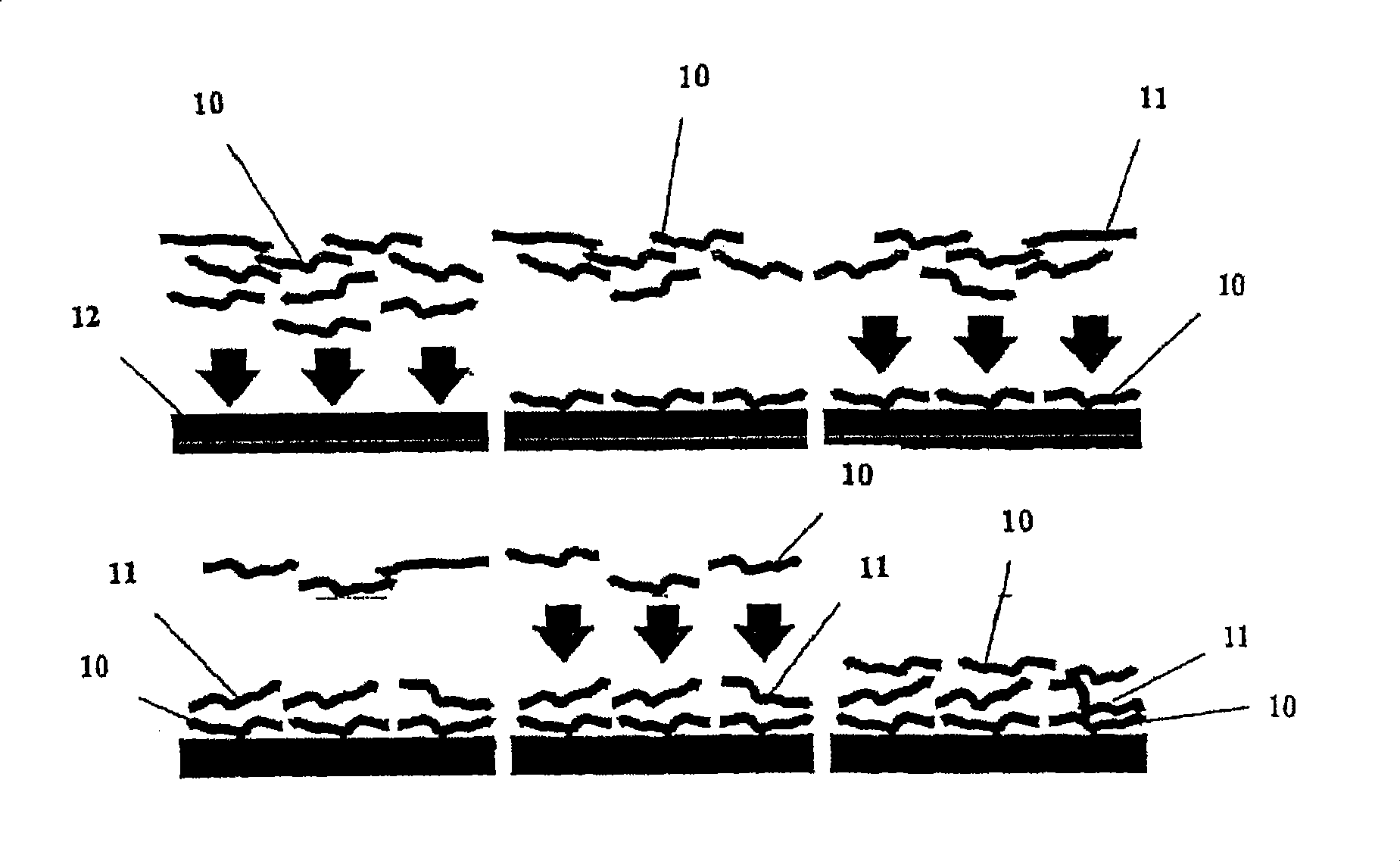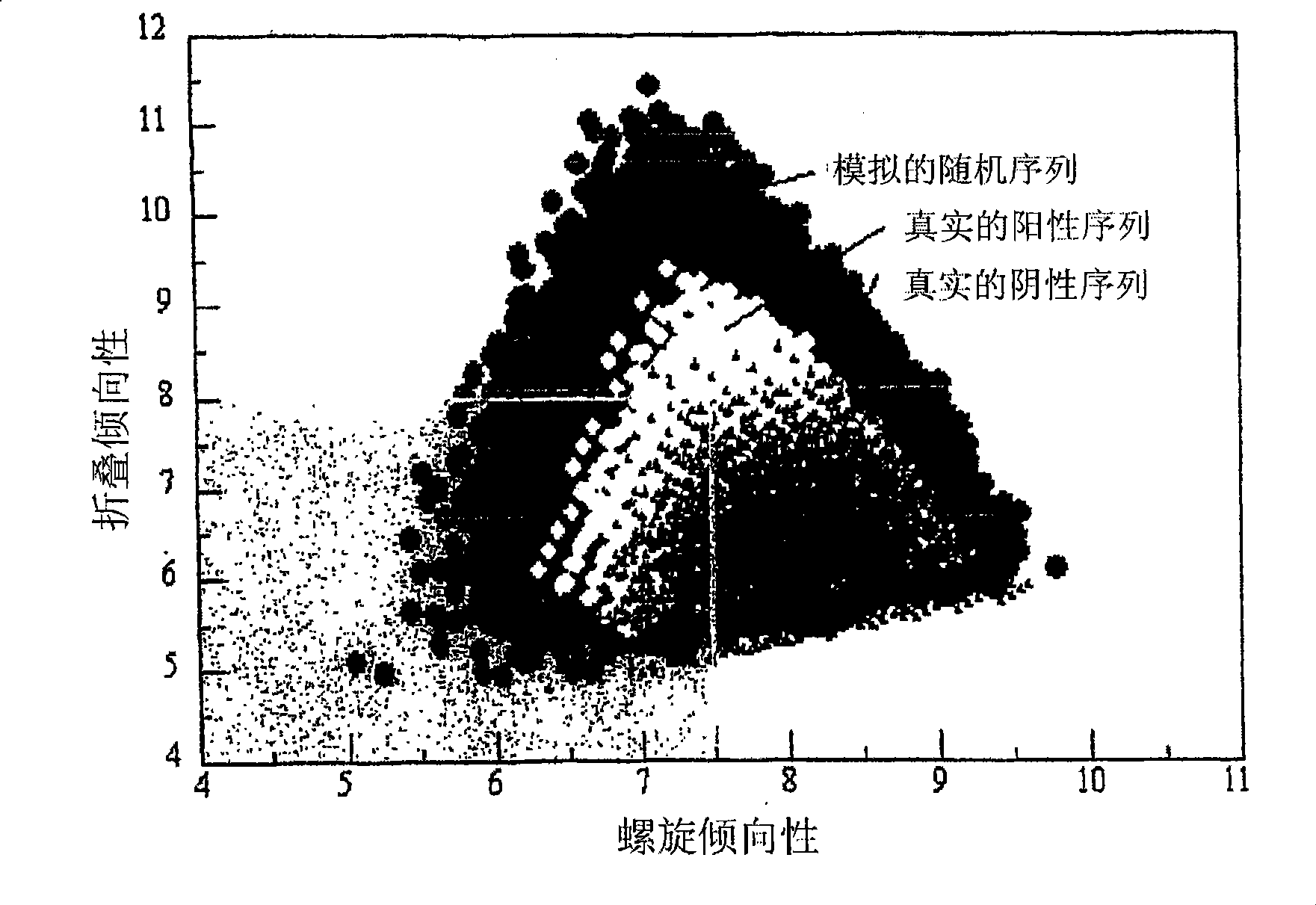Immunogenic compositions and methods of use
A multi-layer film and adjacent layer technology, applied in the direction of peptides, specific peptides, chemical instruments and methods, etc., can solve the problems of scaling up cost, lack of biocompatibility, etc.
- Summary
- Abstract
- Description
- Claims
- Application Information
AI Technical Summary
Problems solved by technology
Method used
Image
Examples
example 2
[0205] Example 2—Experiments Involving Redesigned Polypeptides Containing Cysteine
[0206] b. Peptides
[0207] The peptides used are:
[0208] Tyr Lys Cys Lys Gly Lys Val Lys Val Lys Cys Lys Gly Lys
[0209] Val Lys Val Lys Cys Lys Gly Lys Val Lys Val Lys Cys Lys
[0210] Gly Lys Val Lys
[0211] (SEQ ID NO: 5)
[0212] Tyr Glu Cys Glu Gly Glu Val Glu Val Glu Cys Glu Gly Glu
[0213] Val Glu Val Glu Cys Glu Gly Glu Val Glu Val Glu Cys Glu
[0214] Gly Glu Val Glu
[0215] (SEQ ID NO: 6)
[0216] Unlike the other peptides used in the experiments described here, these two were not designed using human genome information; they were designed for the sole purpose of evaluating the role of disulfide bond formation in peptide film stabilization. The net charge strength of SEQ ID NO: 5 at pH 7 is 16 / 32 (0.5); while the net charge strength of SEQ ID NO: 6 at pH 7 is 16 / 32 (0.5). In both cases, the net charge strength at pH 7 was greater than or equal to about 1 / 2 the total l...
example 3
[0227] Example 3—Experiments Involving Cysteine-Containing Designer Polypeptides
[0228] f.Material
[0229] The essential elements of the experiment were a quartz crystal microbalance apparatus; a silver-coated resonator (9 MHz resonant frequency); a negative 48-residue peptide (LN3) (SEQ ID NO: 4); and the following sequence termed "SP5" The positive 48-residue peptide:
[0230] Tyr Lys Gly Lys Lys Ser Cys His Gly Lys Gly Lys Lys Ser Cys
[0231] His Gly Lys Gly Lys Lys Ser Cys His Gly Lys Gly Lys Lys Ser
[0232] Cys His
[0233] (SEQ ID NO: 7)
[0234] Like the other designed peptides discussed in section (D)(1) above, SP5 was designed using the method described in (D)(1) above to analyze the amino acid sequence of the human blood protein lactoferrin (gi|4505043). ELBL buffer was 10 mM Tris, pH 7.4, 10 mM NaCl and 1 mM DTT. The lysis buffer was 10 mM KCl, pH2. 2 mL peptide solutions of SP5 and LN3 were prepared by adding 4 mg of each peptide to 2 mL of the above bu...
example 4
[0253] Example 4. A polypeptide film comprising an RGD functional domain, wherein the linear charge density intensity of each residue is about 0.75.
[0254] In one embodiment, the functional domain of the composite polypeptide is an RGD sequence, wherein the charge density of the composite peptide is about 0.75. The RGD sequence binds the extracellular portion of the receptor protein integrin, thereby promoting cell adhesion. The sample peptides were designed as follows:
[0255] KKKAKKKGKKKAKKKGRGDKKKAKKKGKKKAKKKY (SEQ ID NO: 8)
[0256] EEEAEEEGEEEAEEEGRGDEEEEAEEEGEEEAEEEY (SEQ ID NO: 9)
[0257] In this example, the polypeptide SEQ ID NO: 8 is a positively charged polypeptide with an RGD functional region, a first surface adsorption region KKKAKKKGKKKAKKKG (SEQ ID NO: 10) and a second surface adsorption region KKKAKKKGKKKAKKKY (SEQ ID NO: 11) . The composite peptide had a net charge strength / residue of +26 / 35 or +0.74 at pH 7. The polypeptide SEQ ID NO: 9 is a negativ...
PUM
| Property | Measurement | Unit |
|---|---|---|
| water solubility | aaaaa | aaaaa |
| water solubility | aaaaa | aaaaa |
| solubility (mass) | aaaaa | aaaaa |
Abstract
Description
Claims
Application Information
 Login to View More
Login to View More - R&D
- Intellectual Property
- Life Sciences
- Materials
- Tech Scout
- Unparalleled Data Quality
- Higher Quality Content
- 60% Fewer Hallucinations
Browse by: Latest US Patents, China's latest patents, Technical Efficacy Thesaurus, Application Domain, Technology Topic, Popular Technical Reports.
© 2025 PatSnap. All rights reserved.Legal|Privacy policy|Modern Slavery Act Transparency Statement|Sitemap|About US| Contact US: help@patsnap.com



